Sungei Kadut Eco District
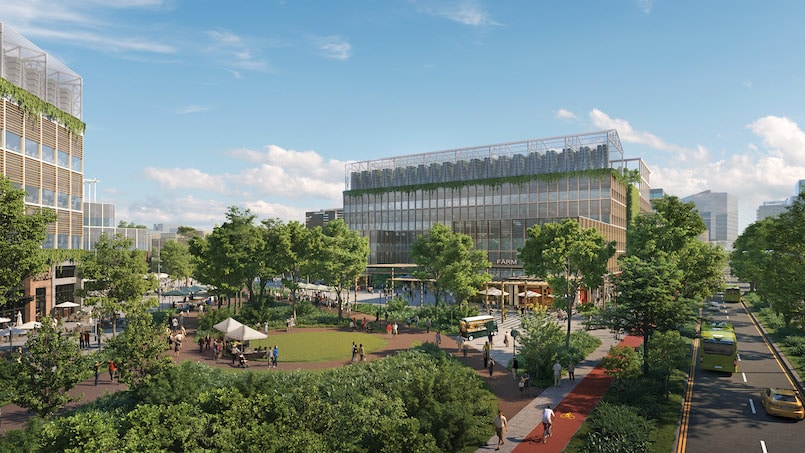
Sungei Kadut eco-district Singapore
Agri-Food Innovation Park and Kranji Green, two cutting-edge initiatives, will help Sungei Kadut become once again a place of exciting possibilities.
Introduction :
One of the oldest industrial estates in Singapore gets planned to ensure that it can remain adaptable and agile to meet the needs of the manufacturing sector, which is experiencing rapid change. The JTC Corporation (JTC) master plan includes an innovative strategy to support the transformation of existing businesses and the emergence of new, environmentally friendly, high-growth industries in Sungei Kadut, such as agri-tech and environmental technology. The development of new exportable skills will also have more opportunities. The Sungei Kadut Eco-District (SKED) Masterplan Exhibition was opened today at the URA Centre by Minister of Trade & Industry Chan Chun Sing.
Establishing the manufacturing sector in Singapore:
Sungei Kadut, one of Singapore’s first industrial estates, was crucial in early attempts to improve our country’s fortunes. It attracted international investments and created many desperately needed jobs. Most significantly, it established Singapore’s manufacturing sector as a pioneer, planting the economic seeds that blossomed into a pillar that in 2018 contributed more than 20% of Singapore’s GDP.

Transforming & manufacturing for Singapore’s future:
Today, Sungei Kadut has an even more significant influence. It will be changed to account for the changing needs of the manufacturing sector and include high-tech businesses and knowledge-based occupations that appeal to a modern workforce. It will be a residence where both new and old industries, including agri-food technology and environmental technology, find the best grounds to revive in Singapore.
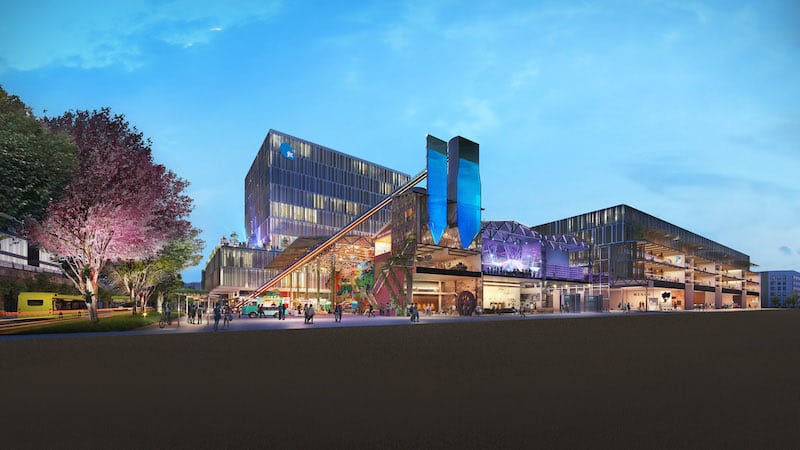
Technology:
Everything gets improved by technology. And that is only a preview of what is to come. There have never been great opportunities made possible by technology. But we haven’t even scratched the surface of its potential. The demand for sustainable food options is rising, thanks to agri-food technology. In addition to growing into a US$5 trillion market, it is essential to achieving Singapore’s goals for food resilience. Place your company in the Agri-Food Innovation Park if you’re looking to capitalize on this market and gain access to its close-knit ecosystem of R&D firms, ingredient suppliers, and food producers. Moving to Kranji Green will allow you to establish yourself in the developing field of environmental technology. It will assist you in carrying out your plans and realizing your dream of a better future.
Rejuvenating industrial estates:
The pursuit of green construction in Singapore has advanced significantly thanks to the Building and Construction Authority (BCA) Green Mark accreditation program, which get introduced in 2005. Since then, more commercial buildings have included eco-friendly elements like solar panels, energy-efficient HVAC systems, and LED lighting to meet the rising demand for environmentally friendly structures.
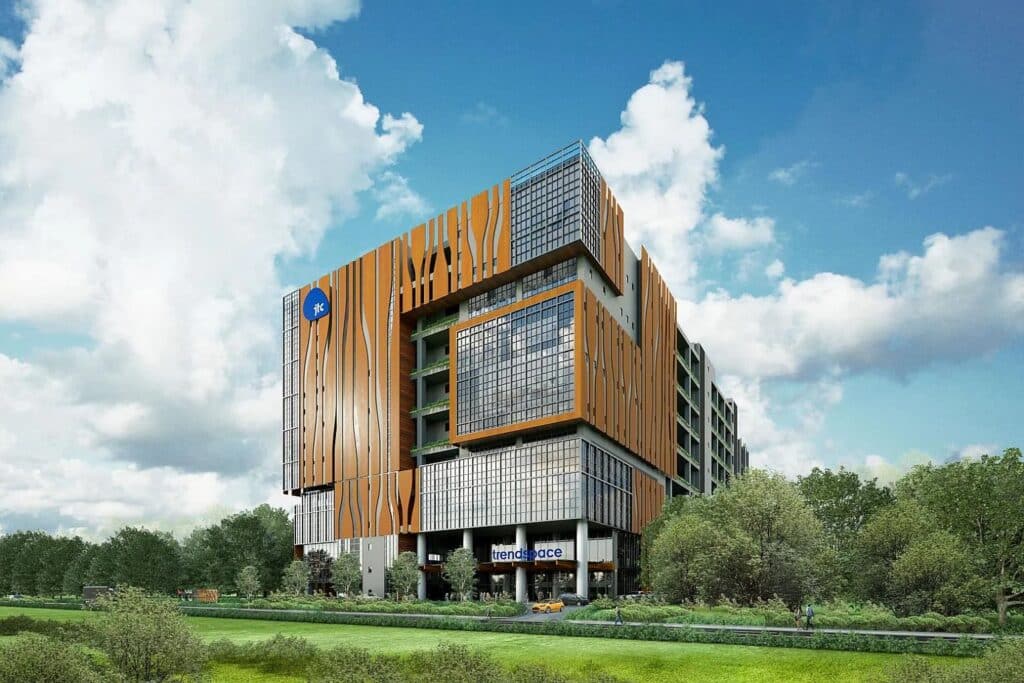
From sustainable industrial estates to green buildings:
Beyond specific structures, creative approaches to developing brand-new industrial estates on greenfield sites or revitalizing aging industrial areas also offered numerous opportunities to convert industrial estates of Singapore into eco-friendly and sustainable neighborhoods. For instance, the Biopolis precinct in the first phase of One-North received the BCA’s Green Mark Gold award in 2005 for its innovative approach to environmental sustainability. The 50-hectare CleanTech Park (CTP), the first eco-business park in Singapore, was unveiled in 2010 with a key focus on preserving the local biodiversity and natural environment. In 2012, CTP became the first development to receive the Platinum Green Mark of BCA for Districts designation for its energy-efficient infrastructure and public amenities. It may reduce energy use by more than 40% and potable water use by 25%, resulting in yearly utility cost reductions of nearly 40%.
The next generation of green and sustainable industrial estates:
Singapore will build as a component of a big sustainable live-work-learn-play area. One illustration is the proposed 50-hectare Punggol Digital Area (PDD), a Smart and sustainable business district in Singapore, which has a business park, the new campus of the Singapore Institute of Technology, and neighborhood amenities. Combines and centralizes the data gathering across all PDD platforms, including:
- Building, property, and facilities management systems
- A system for localized cooling
- A pneumatic garbage transfer system for the entire district
- autonomous systems for delivering products
- Systems for access and security
- System for parking cars
- System of traffic lights
- The autonomous vehicles in the area
Smart Grid for Energy:
Real-time control of the estate’s energy consumption enables everyone to maximize efficiency and reduce waste. The 500-hectare Sungei Kadut Eco-District (SKED), which focuses on emerging industries like agri-tech and environmental technology, also emphasizes sustainability. In addition to housing the first multi-story recycling facility, Kranji Green, designed as a car-free neighborhood with community amenities, SKED will support the development of green technologies and advance zero waste goals in Singapore. Through the grouping of complementary industries, SKED has the potential to develop sustainable, circular economies.
More greenery can expect for existing estates thanks to the government’s commitment to tripling the number of trees in industrial areas over the next ten years as part of the City in Nature initiatives under the Singapore Green Plan 2030.
Keys to a great urban Rejuvenating project:
The industrial park in Singapore is becoming more innovative. Singaporeans will have access to lovely parks, natural spaces, and lush flora while working in a brand-new industrial complex in 2024. The upcoming Jurong Innovation District (JID), developed by the industrial development organization JTC, will be welcoming and sustainable to differentiate itself from other manufacturing estates and draw the best talent and businesses, according to its developer Finn Tay, director of JTC’s New Estates Division 1. Currently, the manufacturing industry in the nation employs over 450,000 people and accounts for about 21% of its GDP.
Singapore plans to grow its manufacturing sector by 50% by 2030 and free up workers for higher-value work by switching from more traditional, labor-intensive manufacturing to sophisticated manufacturing, according to the Manufacturing 2030 strategy unveiled last year. We’ve already discussed the many advantages of revitalizing run-down metropolitan areas as mixed-use communities for habitation and employment, but aspects must consider for these projects to be successful. While it’s true that each urban regeneration project is unique and will depend on local conditions, there are a few general principles that developers must keep in mind to be successful.
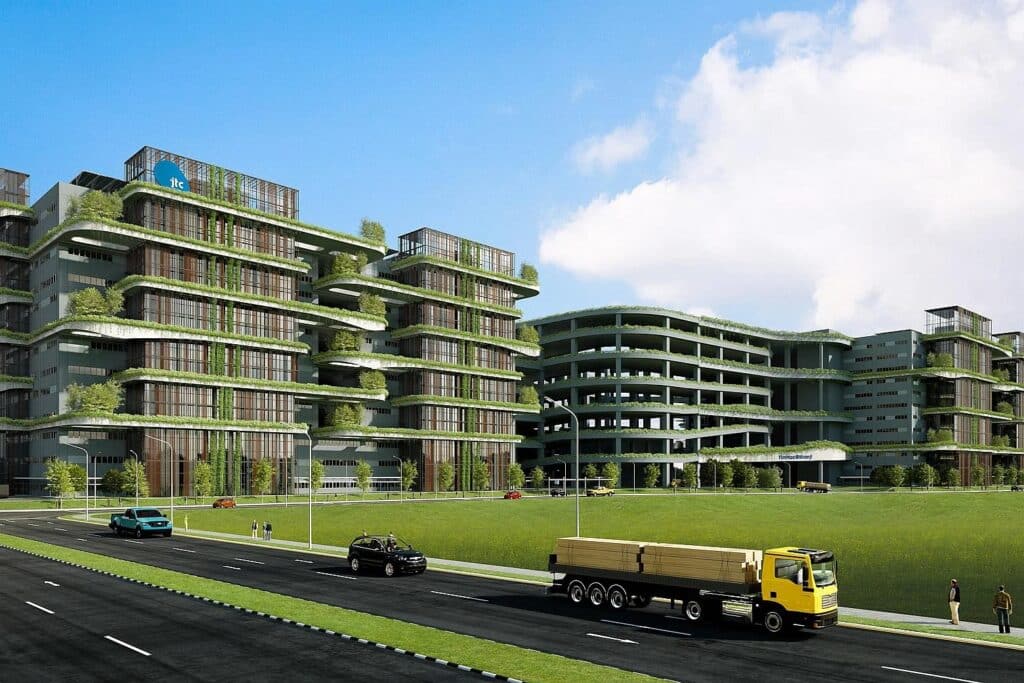
Collaboration:
The more knowledge developers have about the current neighborhood and its residents, the better equipped they will be to plan a regeneration project. Because local authorities can provide specific information about what the area and the people who live there need, collaborations between the public and private sectors frequently produce successful results. It enables the creation of plans that can add value to and enhance the lives of current residents. During the planning process, it is essential to hold brief consultations with the various groups involved in the project.
Green architecture:
Any project for urban regeneration must start with the right design. Making attractive houses and businesses for people is essential, but consider how they interact with the neighborhood’s infrastructure and design spaces that encourage certain behaviors. The design must also consider the chance that people’s current way of life may alter. To ensure that developments appeal to future generations, developers must consider how residents’ needs may change and offer sustainable solutions.
Keep social variety:
The fact that urban regeneration initiatives frequently unintentionally evict pre-existing communities is one of the key worries. A place becomes more desirable, and the value of the residences increases as new homes and infrastructure get built there. As more costly stores and amenities are constructed close by, the current residents get priced out. The social variety that already exists in places undergoing renovation must be protected. The distinctive characteristics of a location, such as its physical, social, and historical environment, are incorporated into successful regeneration projects.
Establishing community:
How to establish an integrated community is a crucial factor to take into account when renewing places where developers want existing inhabitants to stay and new residents to move in. Once more, design can be essential. If there are attractive, lively places where people frequently gather and interact, such as parks and outdoor spaces, community facilities like libraries and recreation centers, and these spaces. Then people are more likely to mingle, and a sense of community will emerge more quickly.
Pioneer the future of manufacturing in Singapore:
SUNGEI Kadut will undergo a multimillion-dollar makeover as part of a 30-year plan to revitalize one of the oldest industrial estates in Singapore. An eco-district that personifies the ideas of life, work, and recreation will create in the area. Sungei Kadut Eco-District will represent emerging industries, including agri-tech and environmental tech, with plans made public on Thursday morning by Trade and Industry Minister Chan Chun Sing. For instance, A new 18-hectare (ha) Agri-Food Innovation Park will house businesses, research and development (R&D) facilities, and high-tech production sectors like indoor farming, aquaculture hatcheries, and producers of alternative proteins. Mr. Chan claims that this would allow Singaporeans to pursue higher-paying, knowledge-based careers like systems engineering, plant science, and aquaculture nutrition. He pointed out that 200 acres of land have been left aside for potential enterprises and uses Sungei Kadut is always ready to take advantage of opportunities. Mr. Chan also discussed the transformation of Sungei Kadut for after-hours community use. He claimed that on weekends and at night, it would change into a community gathering place with farmer markets and farm-to-fork restaurants.
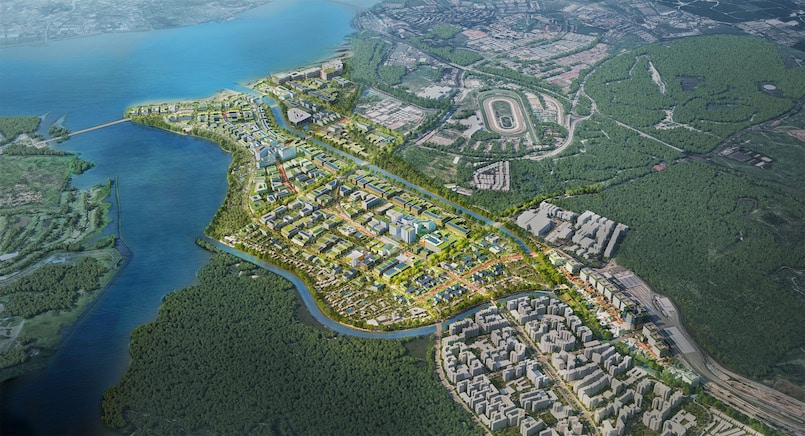
To cut costs and use of resources, existing industries like waste management, furniture manufacturing, and construction will temporarily relocate into JTC-specialised buildings, the company said in a statement. Even though the renovation will take up to 30 years to complete, the first phase has already begun, with the relocation of the furniture industries and other related businesses into JTC at a S$121 million Trendspace beginning last year. TimMac, a $286 million facility, will house the timber, metal, and machinery industries later this year. Kranji Green, a $242 million facility that will house waste management and recycling businesses the following year, will cost S$286 million to construct. Some companies that have operated in the industrial park for thirty to forty years or longer assert that moving into a new location gives them an excellent opportunity to change their business practices in the digital realm. LHT Holdings, a company that processes wood, is one example. As it looks into ways to restructure the timber sector to keep up with Industry 4.0, the company has started retrofitting aging machines with sensors and automating some of its processes, according to its chief executive, May Yap.
Key features of Sungei Kadut Eco-District:
Revitalizing industrial parks to help transform manufacturing and serve as a foundation for new growth industries:
Today, Sungei Kadut is home to companies in the waste management, construction, furniture, and wood industries. As technology has quickly changed, businesses must adapt to remain relevant and competitive. JTC has introduced several multi-user developments in Sungei Kadut over the past few years to support increased land use, lower business expenses, and optimize resource usage by offering communal facilities and services. Among these advancements are Trendspace for the furniture and furniture-related industries, TimMac for the timber, metal, and machinery sectors, and Kranji Green for the waste management and recycling sectors, which supports the environmental technology sector.
The 500-hectare SKED will develop to welcome emerging industries like agri-tech and help them take advantage of new economic opportunities to assist in the restructuring. Agri-Food Innovation Park (AFIP) contains about 18 hectares of land set aside for the initial phase of development in the district to co-locate R&D, prototyping, and high-tech agricultural enterprises such as indoor farming and aquaculture hatcheries. System engineers, plant scientists, and nutritionists will be more in demand for aquaculture. There will also be more chances for innovation and the discovery of synergies with the co-location of agri-tech activities. Another emerging sector that will cover by SKED is environmental technology. For emerging businesses, 200 hectares, or 40% of the land in SKED, would be set aside.
Converting resource limitations into opportunities and exportable skills:
Beyond promoting economic expansion, these initiatives will also enhance master planning and design expertise in industrial redevelopment, which is more difficult in nations with established estates. The revitalization of Sungei Kadut presents chances for the real estate and architectural community to specify top-tier expertise in environmentally and climate-responsive urban planning and adaptive urban design methods.
Resource management and assistance with zero waste initiatives:
Many industrialists have made sustainability a top priority in recent years. In addition to using a systems-level strategy to optimize the flow of energy, water, and materials, the district will also house the first multi-story recycling facility in Singapore, Kranji Green, which gets created in collaboration with the Waste Management Recycling Association of Singapore. The development of such areas will promote environmental technology industry advancement and advance zero waste goals in Singapore. Aiming to support zero waste initiatives, it gets anticipated to finish in 2021. Reusing industrial waste and byproducts will be made simpler by the presence of recyclers there that handle waste streams like those involving metals, paper, and plastics. The ability to replicate a land-based working environment in a high-rise setting will help the industry transition by providing industrialists with significant production floor loading, high ceilings, and large column spans.
In the revitalized Sungei Kadut, bringing together complementary industries has the potential to build sustainable, circular economies. The collection and transmission of waste from businesses to nearby waste management industries
is a synergistic commercial connection within the SKED ecosystem. It lowers the cost of logistics, enhances waste management, and promotes further cooperation.
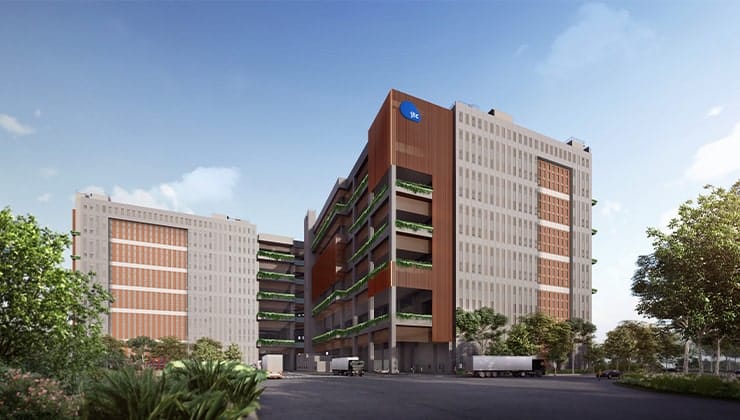
A dynamic, modern location surrounded by nature:
SKED will be more than just a workplace; it will also be an attractive lifestyle destination for the greater community, much like next-generation industrial estates like Jurong Innovation District and Punggol Digital District. The area will provide the neighborhood with shopping, leisure, and lifestyle options after work and on the weekends. Live concerts, pop-up markets, and hiking and biking routes are a few of these events.
Along with new roads and a new MRT station to improve connectivity into and within SKED, a mobility corridor for public buses, bicycles, and pedestrians will also build to support the car-lite yet convenient district concept. The Sungei Buloh Wetland Reserve, the Round Island Route, and waterfront parks will connect by a green network. Other recreational opportunities include the Rail Corridor, the Round Island Route, and waterfront parks.
Manufacturing is evolving quickly, creating new demands for skill and technology, according to JTC CEO Ng Lang. The future estates will create locations for our communities to work, live, and play to support this change. We believe that Sungei Kadut Eco-District will demonstrate innovative approaches to environmentally responsible and climate-resilient urban planning and design.
Partnering with the community on an estate in Singapore rejuvenation plans:
Yishun Industrial Estate and Kallang-Kolam Ayer Industrial Estate will receive crowdsourced concepts from the architecture community as part of JTC’s partnership with the community on Singapore’s estate rejuvenation plans. These locations get chosen for their closeness to major transportation hubs and urban centers. JTC wants to use this exercise to advance its understanding of industrial renewal while helping those who work and live in those estates.
Some general features of an eco-district:
Environmentally friendly structures that use less energy:
For instance, France has a much higher energy consumption rate for buildings (45%) than for transportation (33%). Building in eco-districts is subject to strict regulations requiring the least amount of energy per square meter, eco-friendly building materials use, and a reduction in overall energy consumption. Solar panels and other renewable energy sources get used to meet at least some energy needs, while external insulation prevents energy loss.
Improved waste and water management:
Rainwater is collected and used for toilet maintenance in buildings for the upkeep of public spaces (parks, roadsides, etc.) to reduce their reliance on various resources. Sorting and recycling are necessary steps when it comes to waste. Green space maintenance uses composted organic waste that has been collected and processed. Many eco-districts use a pneumatic underground waste collection system to reduce vehicle traffic to treatment facilities and keep trucks off neighborhood roads.
Functional and social diversity:
All people should be able to access eco-districts (a certain percentage of housing gets generally reserved for reduced-rent units). They strive to provide the socially, culturally, and generationally diverse population inside their borders with all the essential services and functions of any city to promote closeness and a true sense of community. Thus, eco-districts place residences, commercial buildings, offices, and public amenities like parks and leisure centers within a few hundred meters of one another.
Eco-friendly, effective modes of transportation:
The construction of eco-districts, which promote traveling by foot, bicycle, and public transportation, aims to reduce the use of private vehicles. Accordingly, the infrastructure gets modified to include footpaths, bicycle lanes, secure bicycle parking, a robust public transportation system, and the proximity of numerous daily services like shopping centers, schools, daycare centers, sports facilities, and more.
Citywide biodiversity:
The creation of green spaces enhances resident comfort and promotes biodiversity growth.
Active citizens:
To foster a sense of shared governance among eco-citizens, eco-districts aim to involve residents in all project phases, from design (whether new buildings or renovations of existing structures) to maintenance and evolution of the community once it gets established.
Turning resource constraints into opportunities and exportable capabilities :
Businesses must quickly determine how exposed they are to resource challenges in today’s resource-constrained world if they want to future-proof their business models. Business resource issues like the growing land scarcity, energy, water, and materials are escalating quickly. By 2030, the amount of water available could be 40% less than what is needed, and some essential materials from companies might be scarce as early as 2016. These issues are hugely unaddressed, resulting in supply disruptions, expanding regulatory requirements, erratic price fluctuations, and ultimately endangering the viability of current business models.
In contrast, companies that modify their business models by analyzing their exposure to such resource constraints can decide how to manage these risks and take advantage of commercial opportunities. It will boost long-term resilience, increase efficiency, and boost business profits.A strong business case for investment can be made, for instance, based on the results of extensive analysis of the returns from energy efficiency. In comparison to returns from typical business investments of 10-15%, the average internal rate of return for energy efficiency measures identified in over 2,000 organizations by the Carbon Trust was over 40%.
This paper highlights Whitbread, BT, Stagecoach, and Bord Bia as four Carbon Trust clients leading the way in sustainable action and shows how they are rising to the occasion. According to the survey, these organizations are increasing their bottom lines through efficiency gains and get anticipated to have long-term benefits that significantly outweigh the more immediate expenditures.The report also examines the main factors currently encouraging these companies to improve their resource efficiencies, such as competitive differentiation, industry leadership, the delivery of cost savings, and new economic growth opportunities, such as developing new products to satisfy changing consumer demands.
Converting opportunities and exportable skills from resource limitations in Singapore: Anuj, the director of the bio sea, collaborated with the MSc. Integrated Sustainable Design Studio at the National University of Singapore to offer students design advice for Sungei Kadut, one of Singapore’s oldest industrial estates that get slated to transform into a crucial JTC manufacturing hub. We re-envisioned the estate as a modern industrial park where mixed-use commercial and residential buildings coexist harmoniously with natural ecosystems and industries. Being surrounded by natural resources, the final designs expanded the size, caliber, and connectivity of green spaces, enhancing the district’s ecology and demonstrating a significant improvement in agri-food ecosystem services.
Optimizing resources and supporting zero waste efforts: Kranji Green
Optimizing resources:
In light of the diminishing availability of natural resources, VINCI wants to minimize its impact by pursuing a circular economy. It entails enhancing our design and production procedures, lowering the quantity of virgin raw materials mined, putting effective methods into practice, changing one’s behavior to be more effective, and reusing and recycling.
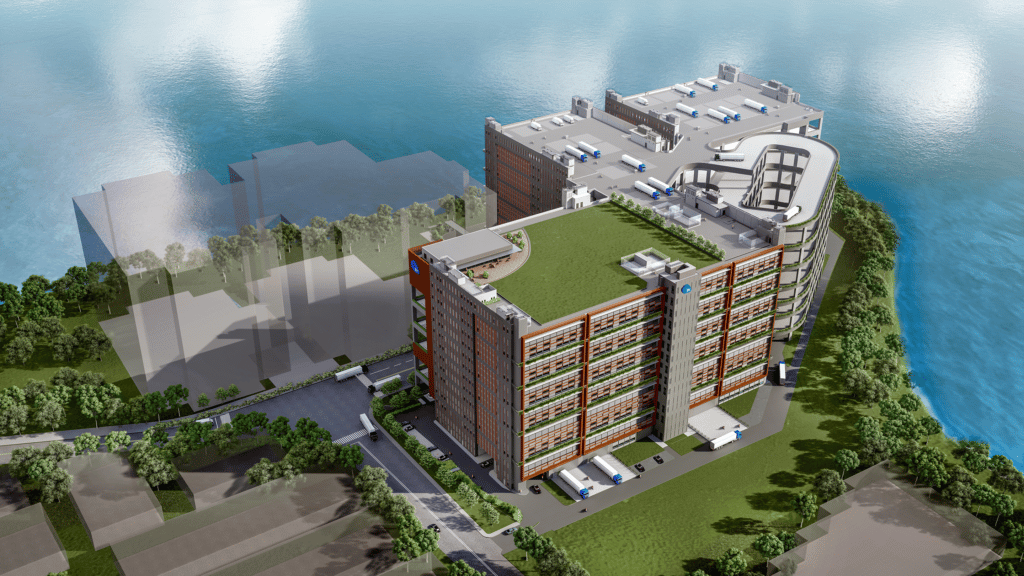
Changing how we produce, consume, and manage our resources:
By pursuing a circular economy, VINCI hopes to reduce the impact of its operations. To achieve this, we must redesign our supply chain to decrease the extraction of virgin raw materials, consume primarily recycled or used goods and sustainable materials, and drastically cut our waste production. It entails bringing together all of our collaborators, clients, and suppliers to discuss the most effective ways to cut back on the use of resources and recycle the waste we invariably generate for use in our own or other projects that support regional solutions. For instance, we offer customers products from waste produced by our business.
A continual improvement strategy:
Adopting a circular economy strategy requires VINCI to reevaluate its current procedures. The main objective is to reduce the amount of virgin raw materials extracted, use efficient processes, adopt beneficial behavioral patterns, and recycle and reuse materials as much as possible. Focusing on our sourcing requires us to improve our waste management, particularly by coming up with creative ways to cut back on and recycle our garbage and that of our clients.
How to support the Zero Waste Revolution in 5 Easy Steps:
Join a zero-waste group in your area:
Zero waste starts in the local area where waste gets produced. You can join various regional or local organizations, like GAIA, to take action to reach zero waste. These organizations organize clean-up initiatives, promote zero-waste policies, host educational events, and provide zero-waste materials.
Encourage the workers who collect trash:
Waste pickers and other workers who sift through trash to find recyclable and reusable items rely on their underpaid and unstable labor to support the world’s waste management system. Worldwide, the unorganized recycling industries employs up to 56 million people.
These are the individuals who keep our cities functioning, according to Arkin. The claim goes that many waste management systems would be ineffective or nonexistent without waste-pickers. Acknowledging waste-pickers contributions, supporting their unions, and urging governments to pay fair wages and provide worker protections are all ways you can help. GAIA also set up an emergency solidarity fund to give waste-pickers financial support during the pandemic.
Be there for the affected communities:
Disproportionately close to vulnerable and marginalized communities, landfills, incinerators, and other waste facilities expose these areas to toxic chemicals, exhaust, and runoff. According to GAIA, 80% of incinerators in the US get situated close to low-income communities of color. Communities frequently protest current facilities and oppose the construction of new facilities. You can demonstrate your support for them by learning about local actions that are taking place, participating in protests, and urging governments to fund environmentally beneficial zero-waste solutions.
Speak with the local decision-makers:
Municipalities must phase out harmful waste management practices while also enacting legislation that forbids the manufacture of materials that result in excessive waste in the first place. At least 127 nations have restricted the production of plastic in recent years, and there is growing support for more limitations. You can hasten this transition by contacting your local representatives and urging them to support zero-waste initiatives. The more people sign up for the zero waste movement, the more likely it is to gain political attention.
In your own life, aim for zero waste:
A political or personal journey produces no waste. Everyone can contribute to reducing waste disposed of in landfills and incinerators by being more careful about the products they purchase and how they dispose of things. Zero waste can achieve by buying locally, avoiding single-use plastics, and composting.
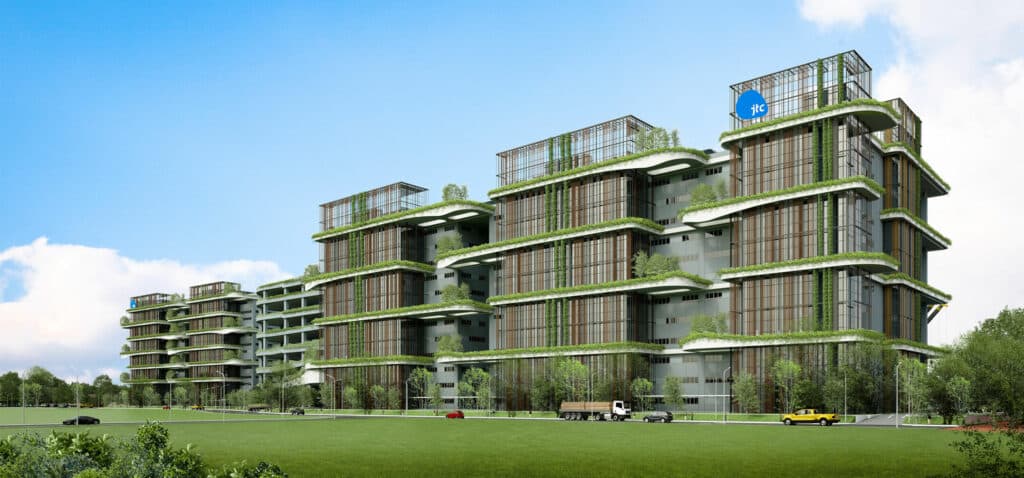
Sungei Kadut Industrial Estate in Singapore get slated to transform into an eco-district:
Christina Brown (B.Arch ’20) participated in a study abroad program in the spring of 2019 that served as research for Singapore’s Sungei Kadut industrial neighborhood into an eco-district. Christina, a visiting student in the Master of Science, Integrated Sustainable Design program at the National University of Singapore, participated in the graduate studio as the team’s youngest member.
An innovation hub for technology and the environment gets created at Sungei Kadut, a 500-hectare property that makes up about one percent of all of Singapore. A statutory board under the Singapore Ministry of Trade and Industry, the JTC Corporation, invited eminent guest lecturers to share their expertise with students on urban planning, ecology, resiliency, and circular economy to support the project.
By the end of the semester, the studio had to have produced one master plan proposal for the government. Each studio team gets given charge of a different section of the proposal. Nirmal Kishnani, Mun Summ Wong, and Herbert Dreiseitl, along with Christina and four of her students, helped manage the master plan design and produce the main narrative for the finished concept. They collaborated closely with the other teams, concentrating on the intricate design of particular zones within the master plan. In front of representatives from JTC Corporation, the Singapore Food Authority, and the Singapore Urban Redevelopment Authority, Christina and coworker Supratim Sengupta present the final studio concept.
We’ve previously discussed the numerous advantages of converting underutilized urban areas into mixed-use neighborhoods for housing and employment, but factors must consider for these projects to be practical. Even while every urban regeneration project is different and will have varied concerns depending on the location, there are a few similar criteria that developers must keep in mind to be successful.











